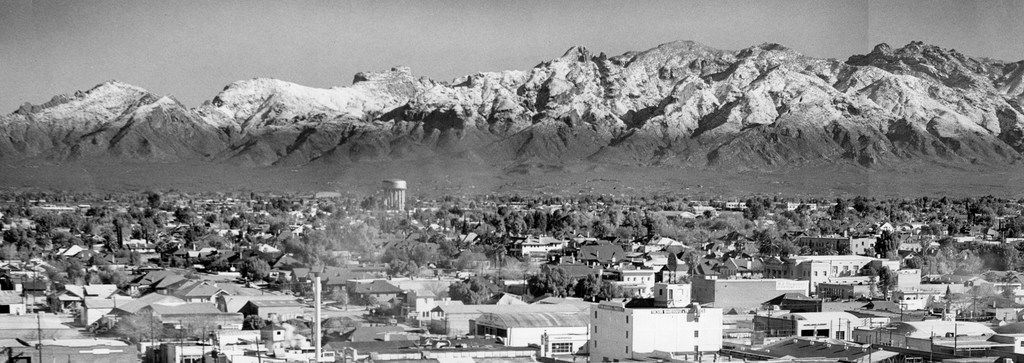Rummaging through my desk this past week, I came across a small booklet I had forgotten was there.
The booklet has a simple cover of a wide-angle, color photo of the city looking northwest to the Santa Catalina Mountains. Its title, “Tucson Community Goals,” sounds as lofty as the sliver of white clouds hovering over Mount Lemmon.
The Citizens’ Committee on Community Goals produced the 96-page booklet. It contains a broad overview of planning for Tucson’s future, laying out the city’s strengths and weaknesses, and suggesting “specific means by which the liabilities can be overcome and the assets amplified.”
If you haven’t heard of it, it’s understandable. It was published in 1966. And if anyone bought it 53 years ago, the booklet cost ’em 50 cents.
The city’s population was 239,000 that year, and I was attending All Saints-Cathedral Catholic School in Armory Park on South Sixth Avenue.
That year, Pima County voters approved a proposal to create Pima Community College, and the city’s urban renewal project was a couple of years away from finishing off the old Mexican downtown barrio.
Lyndon Johnson was president, overseeing a growing and unpopular Vietnam War, and striving to reduce domestic poverty and discrimination through his Great Society programs. Samuel P. Goddard Jr., a Tucson lawyer, was the governor. Both were Democrats but that same year Arizonans elected Republican Jack Williams as the next governor.
In this broad context, Tucson Mayor Lew Davis and six council members, in the previous year, appointed the Community Goals Committee “to determine the aspirations and potentials of the Tucson community” and make recommendations to achieve the stated goals.
As I leafed through the booklet’s pages, I thought about Tucson then and Tucson now. Much of the discussion of Tucson’s challenges in the mid-’60s — housing, health and education, land use, culture and recreation, jobs and the economy, and the role of government entities — is the same today.
The report generally stated that the city, still struggling from the 1962 economic crash, had tremendous potential for growth but that it lacked coordination and resolve from its political leadership and residents.
One of its principal and overriding recommendations was that Tucson should consolidate local government entities — city and county into one, as well as the school districts into a single unified district — to allow for coordinated planning.
Moreover, the committee suggested creation of the Tucson Metropolitan Association, which would include elected officials from the city, county, South Tucson, the sanitation district and the school districts.
“Constitute TMA as the official agency through which area-wide decisions are made,” said the report.
The report has a Chamber of Commerce feel and flavor, strongly suggesting that Tucson can and should expand. Looking at the committee roster, it appears that all the members were white and male — the movers and shakers of the time, including Roy P. Drachman.
“The community must strive to create those conditions which will best achieve its desire to make Tucson a city which is healthful, pleasant, efficient and prosperous, and which has those special qualities which identify it unmistakably as Tucson,” it said. Yet, it added, “Tucson must develop an identity.”
But if the report were issued today, likely it would include topics that were unforeseen or ignored in 1966 — racial and gender diversity and inclusion, environmental degradation and climate change, trade with Mexico and the border, gentrification of the city’s downtown barrios, sustainability and promotion of alternatives to vehicles.
The committee today would, hopefully, include women and people of color.
A committee today would probably report that more affordable housing is needed, that public education requires more resources, that the local economy should be diversified and not rely on home construction and on call and distribution centers.
More than likely the committee would report that Tucson, with nearly 650,000 people within the city limits, needs to improve city parks and build more recreational centers. And hopefully the report would call for continued construction of bike lanes and their expansion.
Tucson, like all other cities, faces challenges and obstacles. Tucson will continue to have contentious discussions over its future and direction. And answers will remain elusive or unsatisfactory. Show me a city that doesn’t argue about these same issues.
But for me Tucson remains a special and unique city. It’s full of history, abundantly rich with diverse cultures, and surrounded by incredibly beautiful natural settings. The city has its successes and appeal, a beauty that is too often appreciated more by outsiders than residents.
People have been living here in the valley for 4,000 years. There’s a good reason for that.






